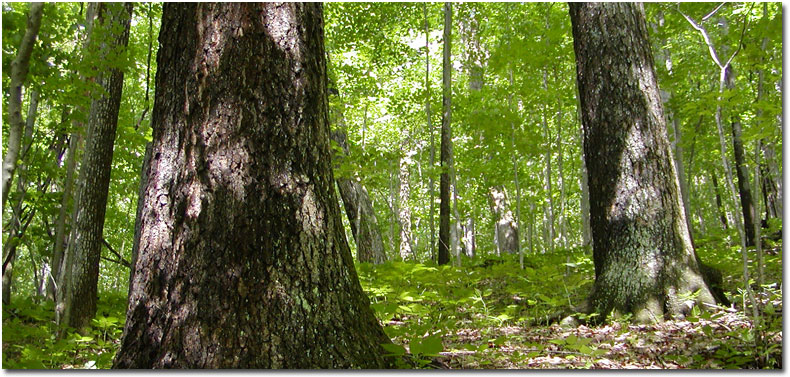The Big Tree Program originated in Maryland in 1925, went national in 1940, and is run by American Forests, www.americanforests.org. Each state has a State Coordinator who collects data, measures trees, and biannually submits certain trees to American Forests as potential National Champions.
In Maryland, the DNR Forest Service handled the program until 2007 when budget cuts forced them to transfer responsibility to the Maryland State Association of Forest Conservancy District Boards, a volunteer group. The Cecil Forestry Board handles the day-to-day operation for the State, and I serve as State Coordinator. We are funded by a grant from the U.S. Department of Agriculture Forest Service for Urban and Community Programming, and partially by grants from the Chesapeake Bay Trust.
There are many reasons why the program started and continues to this day. First, it serves to reward those owners who care for their big trees. About 90% of our registered trees are "backyard trees", as opposed to forest-grown trees. Trees grown in back yards tend to have less competition and receive more nutrients and water from the owners (lawn fertilizers often benefit the trees more than the lawn). Each big tree owner receives a certificate, a thank you letter, and a list of the trees of that species registered in Maryland. Second, the program provides a reference for scientific studies. From time to time I am contacted by researchers who are studying a particular species and need to know where the big examples are located. Third, the program provides a record over time of changes to species distribution. Thirty years ago one would not find examples of Southern magnolias and crape myrtles in northern Maryland; today they are very common. The program helps to document these changes. Finally the program provides locations of rare and unusual species for those who wish to improve their knowledge and identification skills.
Trees are the cheapest and perhaps the most effective way now available to remove pollutants from the air and nitrogen and phosphorus from non-point pollution sources before they enter the Chesapeake Bay. While it is important to promote the planting of trees to reduce Bay pollution, it is also important to encourage the protection of “backyard” trees, as they are a critical component of our efforts to clean our air and water. In addition the cooling effect of large shade trees in summer should not be minimized as we consider ways to reduce our energy consumption. Citizens who plant, maintain and protect “backyard” trees should be recognized and thanked for their efforts. As volunteers with the Maryland Big Tree Program, we are happy to do so.
- John Bennett
Volunteer Coordinator
Maryland Big Tree Program
410-287-5980
[email protected]
www.cecilfb.sailorsite.net
